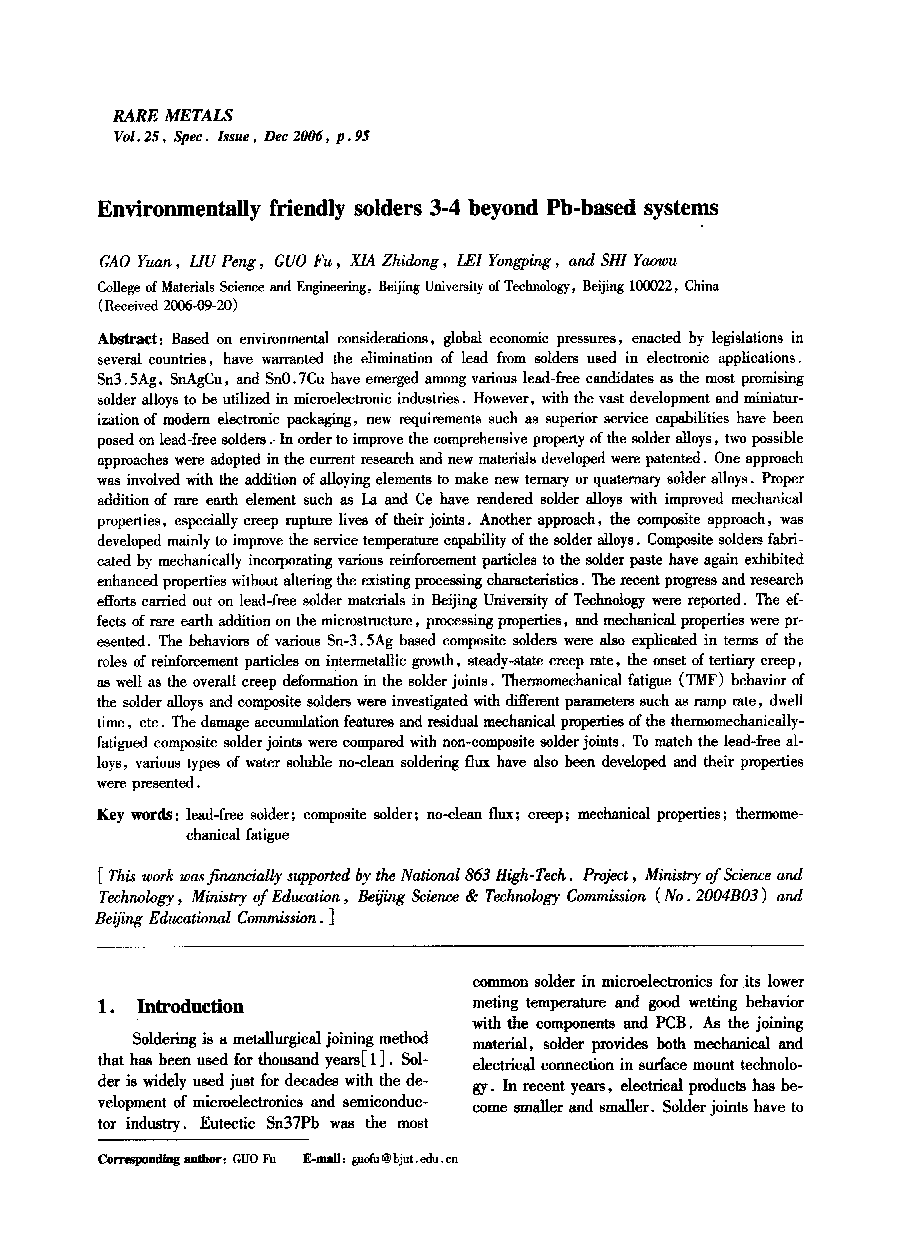| Article ID | Journal | Published Year | Pages | File Type |
|---|---|---|---|---|
| 1635399 | Rare Metals | 2006 | 6 Pages |
Abstract
Based on environmental considerations, global economic pressures, enacted by legislations in several countries, have warranted the elimination of lead from solders used in electronic applications. Sn3.5Ag, SnAgCu, and Sn0.7Cu have emerged among various lead-free candidates as the most promising solder alloys to be utilized in microelectronic industries. However, with the vast development and miniaturization of modern electronic packaging, new requirements such as superior service capabilities have been posed on lead-free solders. In order to improve the comprehensive property of the solder alloys, two possible approaches were adopted in the current research and new materials developed were patented. One approach was involved with the addition of alloying elements to make new ternary or quaternary solder alloys. Proper addition of rare earth element such as La and Ce have rendered solder alloys with improved mechanical properties, especially creep rupture lives of their joints. Another approach, the composite approach, was developed mainly to improve the service temperature capability of the solder alloys. Composite solders fabricated by mechanically incorporating various reinforcement particles to the solder paste have again exhibited enhanced properties without altering the existing processing characteristics. The recent progress and research efforts carried out on lead-free solder materials in Beijing University of Technology were reported. The effects of rare earth addition on the microstructure, processing properties, and mechanical properties were presented. The behaviors of various Sn-3.5Ag based composite solders were also explicated in terms of the roles of reinforcement particles on intermetallic growth, steady-state creep rate, the onset of tertiary creep, as well as the overall creep deformation in the solder joints. Thermomechanical fatigue (TMF) behavior of the solder alloys and composite solders were investigated with different parameters such as ramp rate, dwell time, etc. The damage accumulation features and residual mechanical properties of the thermomechanically-fatigued composite solder joints were compared with non-composite solder joints. To match the lead-free alloys, various types of water soluble no-clean soldering flux have also been developed and their properties were presented.
Related Topics
Physical Sciences and Engineering
Materials Science
Metals and Alloys
Authors
Yuan GAO, Peng LIU, Fu GUO, Zhidong XIA, Yongping LEI, Yaowu SHI,
